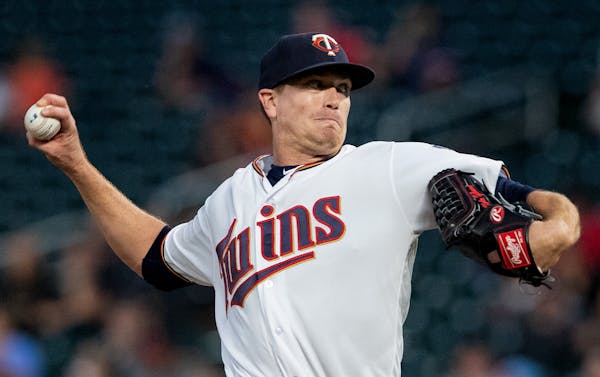If back-to-schoolers are still writing essays about how they spent their summers, the theme this year is this: By going to the Minnesota State Fair — and not necessarily Target Field.
The Great Minnesota Get Together topped 2 million in attendance for the first time in its history, and in posting that number the State Fair almost certainly will achieve another milestone: It will beat the Twins in total attendance for the first time since 2000.
The Twins are on pace for an overall attendance about 100,000 lower than that of the Fair, a fact I was first alerted to by colleague Paul Klauda. He wondered if this had ever happened before, which sent me on a dive into some numbers. What at first might seem like an apples to oranges comparison is actually somewhat revealing when put into context.
Going back to 1961 — the year the Twins arrived in Minnesota and also the year MLB went to a 162-game schedule — we have 58 years, counting this year, with which to work.
The Twins outdrew the Fair each of their first 10 years of existence from 1961-1970, but as the Twins' fortunes waned and the Fair gained momentum, the Fair took the attendance crown every year from 1971-1983.
The arrival of a young wave of stars in the Metrodome — led by Kirby Puckett — gave the Twins the edge in all but one year between 1984 and 1993. As the dome aged as poorly as the Twins, the Fair regained the lead every year from 1994-2000.
Buoyed by another young group while staving off contraction talk, the Twins retook the lead in 2001 and held it every year through 2017 thanks to strong teams and a new ballpark. This year's Twins disappointment and another steady climb by the Fair reversed the trend.
Tally, so far: Twins 36 years ahead, State Fair 22, as you can see conveniently on the year-by-year chart (2018 Twins attendance is projected).
What does it tell us?
*Well, for starters the State Fair has grown at a more or less steady pace. Though you see some dips that were likely influenced by weather and/or economic factors in particular years, overall gains have been consistent and drops have been temporary.
This speaks to the power of the Fair. Sure there are new foods and other attractions added, but it more or less offers the same experience every year. There is not a "winning" or "losing" Fair. It is a known commodity, and that is a selling point.
*Twins attendance is far more volatile. Weather and economic factors might play small roles, but those tend to get smoothed out over the course of 81 home games.
You can see from the chart that their attendance is much more closely tied to major events like performance (topping 3 million fans in 1988, the year after winning their first World Series) and the opening of Target Field, which boosted attendance again in the early part of this decade.
*About seven times more people per day went to the Fair (170,000) than the average Twins game this year (about 24,000), but the 12-day Fair is always going to win that battle. The State Fair lasts pretty much all day, while Twins games only seem like they do.
*It's hard to imagine the Twins regaining the lead in 2019 since season ticket sales are heavily influenced by the previous year's performance, though a successful season could push the Twins back over 2 million fans and into contention.
It will be interesting to see whether the Fair continues on its steady growth line or reaches a leveling off point in the future, and it will similarly be interesting to see to what extent the Twins' attendance recovers when their fortunes consistently turn positive (or continues to plummet if the do not).
Havertz scores 2 as Arsenal routs Chelsea 5-0 to cement Premier League lead

Caitlin Clark is set to sign a new Nike deal valued at $28 million over 8 years, reports say

Live from Target Center: Timberwolves vs. Suns game updates
![Vikings running back Dalvin Cook (33) watched during training camp Wednesday. ] ANTHONY SOUFFLE • anthony.souffle@startribune.com](https://arc.stimg.co/startribunemedia/ZHKH7NZVBNL2RFYGUCXADSN6IA.jpg?h=91&w=145&fit=crop&bg=999&crop=faces)
